Post 147: 10 April 1997: Day 6 Cotherstone to Langdon Beck Youth Hostel – 16 miles
On leaving Cotherstone, we joined ‘The Teesdale Way’ long-distance walk and marched with it as far as Middleton-in-Teesdale; the walks symbol, the dipper, being indicated on signs. The Teesdale Way goes from Middleton-in-Teesdale to Teesmouth and offers approximately 90 miles of walking in three counties, Durham, North Yorkshire and Cleveland.
Between Cotherstone and Romaldkirk we visited the ‘fairy cupboards’, small caves which have been scoured out of the rock by the action of water in the River Tees. The delightful village of Romaldkirk was passed through, which, with its two inns and church adjacent to the three village greens, is welcoming to walkers; it would be difficult to find a more delightful village in Teesdale. The Church of St. Romald dates from the 12th century, with later additions in the 13th and 14th centuries. The church is cruciform in design with a 12th-century Norman arcades, an early English south aisle, decorated north transept, elaborate chancel with double piscina (perforated stone basin near the altar for carrying away water used in rinsing the chalice), and perpendicular tower. It is rightly known locally as the ‘cathedral of the dale’ because of its roomy and ornate style. Of the three village greens, one has village stocks and another has an old water pump.
We continued to Eggleston village with a short detour to Eggleston Hall and its fine historic gardens, consisting of rare and beautiful plants set in a walled garden. There are winding paths through the gardens and a stream runs through the grounds. The hall, built in 1614, proudly overlooks the Tees but is not open to members of the public. Of interest is a church with graveyard now being restored from the overgrown vegetation; it fell into disuse once the larger Holy Trinity church higher up in the village was built. Nearby a sun dial has the following inscription:-
‘I walk the hours every one
Nor have I yet outrun the sun’
Fortunately, we hadn’t outrun the sun on this walk.
The previous February, whilst checking the route alone and soon after leaving Eggleston village, on arrival at the River Tees, I stopped for lunch. In the peace, tranquillity, warmth of the sun and the moment, I wrote the following poem.
The Tees Alone?
Broad and shallow
Rustling over rocks
Glistening in spring sunshine,
Trees guiding it from birth to extinction.
The dipper, a white speck, walking on tumbling water
Sun-soaked, curtseying, perched on a rock.
At peace with the world
And so am I……
Orchestras in harmony
Upstream and down river.
Seagulls swoop, on their winter retreat,
As sea sounds echo.
A chill pierces this paradise; it is time to go
A bridleway beckons me back
But the memory and moment are eternal,
I was not alone.
It may not be ‘Wordsworthian’, but it came from the heart and inspiration of the moment, which is all that matters.
The walk along the Tees to Middleton-in-Teesdale is delightful, this being the last town of any size in Upper Teesdale and a good place to stock up with provisions, boasting shops, pubs, hotels, a post office, cafés, an information centre and banks. Large parts have been designated a Conservation Area in order to protect the character of its buildings, which reflect its role as the headquarters for lead mining in the area in 19th century. Before the 19th century the town was a small agricultural settlement until, in 1815, the Quaker-owned London lead mining company established its headquarters for northern England here. They built extensively in the town, including schools, their offices at Middleton House, workers homes and a chapel. Piped water was available in the town and the tap housings in walls can still be seen. The houses had their own vegetable gardens, which are still evident today. A model housing estate, with larger houses, was provided at New Town for the most deserving staff.
The cast iron memorial fountain in the centre of the village was built in 1877, after a collection by employees of the London Lead Company for the retirement of the company’s superintendent, Robert Bainbridge.

St Mary’s Church has a detached belfry, little changed since it was built in 1557.
From Middleton-in-Teesdale we rejoined the Pennine Way to march with it to near the Bowlees visitor centre and beyond it to Low Force and High Force. From near the Bowlees Visitor Centre to Langdon Beck Youth Hostel is an area of special interest to botanists, geologists, geographers, ornithologists, industrial archaeologists, and long-distance walkers with an eye to perceive and heart to enjoy. This is one, if not the finest, stretch of riverside walking in the country and, as well as exciting waterfalls, includes an area renowned for rare flowers and many species of birds. In addition, few places in England offer the solitude of the surrounding fells. The area is best viewed in early June, when flowers are in abundance and birds plentiful.
High Force can be seen in a gap between bushes about ten yards off the main path to your right, giving one of the finest views of this magnificent waterfall, the largest and most spectacular of waterfalls in England. After a gate, we dropped to the top of High Force where there are again exciting views of the Tees plunging 70 feet over the Whin Sill leading me to write another poem:
High Force
Escaping from the cold confines of Cauldron Snout
An amphibious amphitheatre is reached.
The Tees plunges painfully to its death,
Over Whin Sill, gasping for breathe.
The juniper watches on
As white waters battle with dark depths,
And from the torrid tumult
The Tees emerges to delirious delight;
It is not dead.
It is difficult to walk through Upper Teesdale, towards Langdon Beck, without being left with the sense of remoteness and wilderness of these parts; to become familiar with it is to be enriched. It is a private world where the silence can be ‘deafening’, something rare and precious in the 20th century.
A sign, now removed, on the drive leading up to the road near the youth hostel used to say:
WARNING
ANYONE CAUGHT
EXCEEDING 5MPH
WILL BE STONED TO DEATH
THIS MEANS YOU

A wonderful portrayal of northern humour in these remote parts, which the authorities did not appreciate (not PC) and forced its removal.


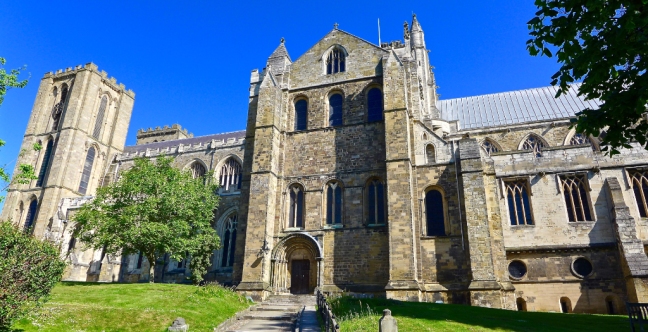




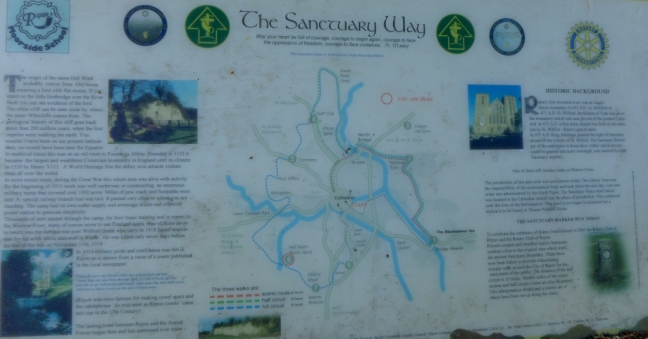













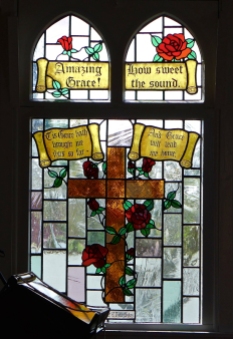






















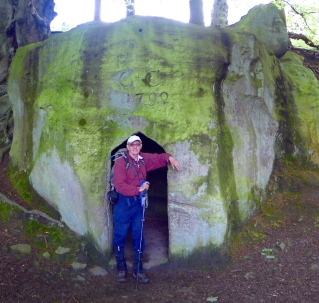









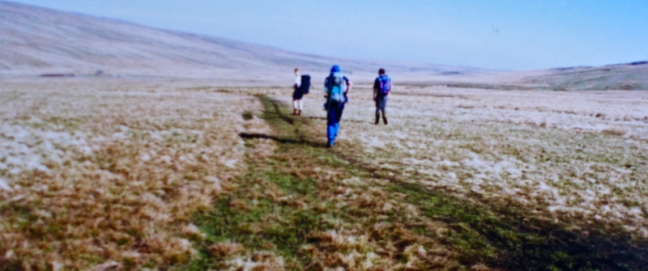 It looked like a greeny-brown moon landscape with nothing, as far as the eye can see, apart from moorland and blue horizon. Now what makes people walk into such a landscape? Is it the isolation, the stark beauty of barrenness, the fresh air, sounds of the skylark or lapwing. Don’t be daft; leaving North Yorkshire and the Yorkshire Dales National Park to enter County Durham, we arrived at the highest pub in England, the Tan Hill Inn.
It looked like a greeny-brown moon landscape with nothing, as far as the eye can see, apart from moorland and blue horizon. Now what makes people walk into such a landscape? Is it the isolation, the stark beauty of barrenness, the fresh air, sounds of the skylark or lapwing. Don’t be daft; leaving North Yorkshire and the Yorkshire Dales National Park to enter County Durham, we arrived at the highest pub in England, the Tan Hill Inn.











